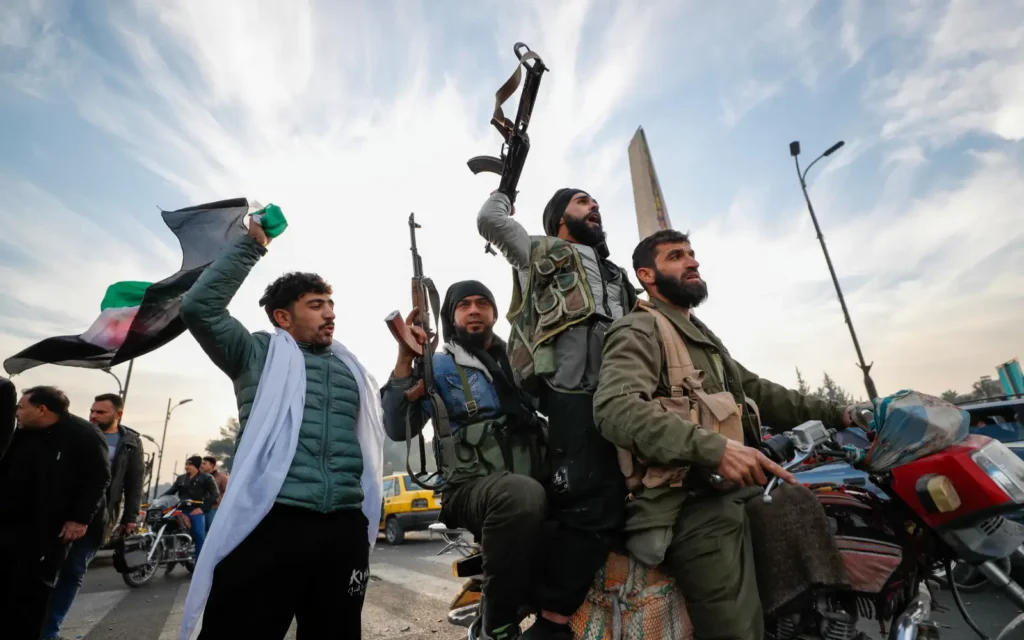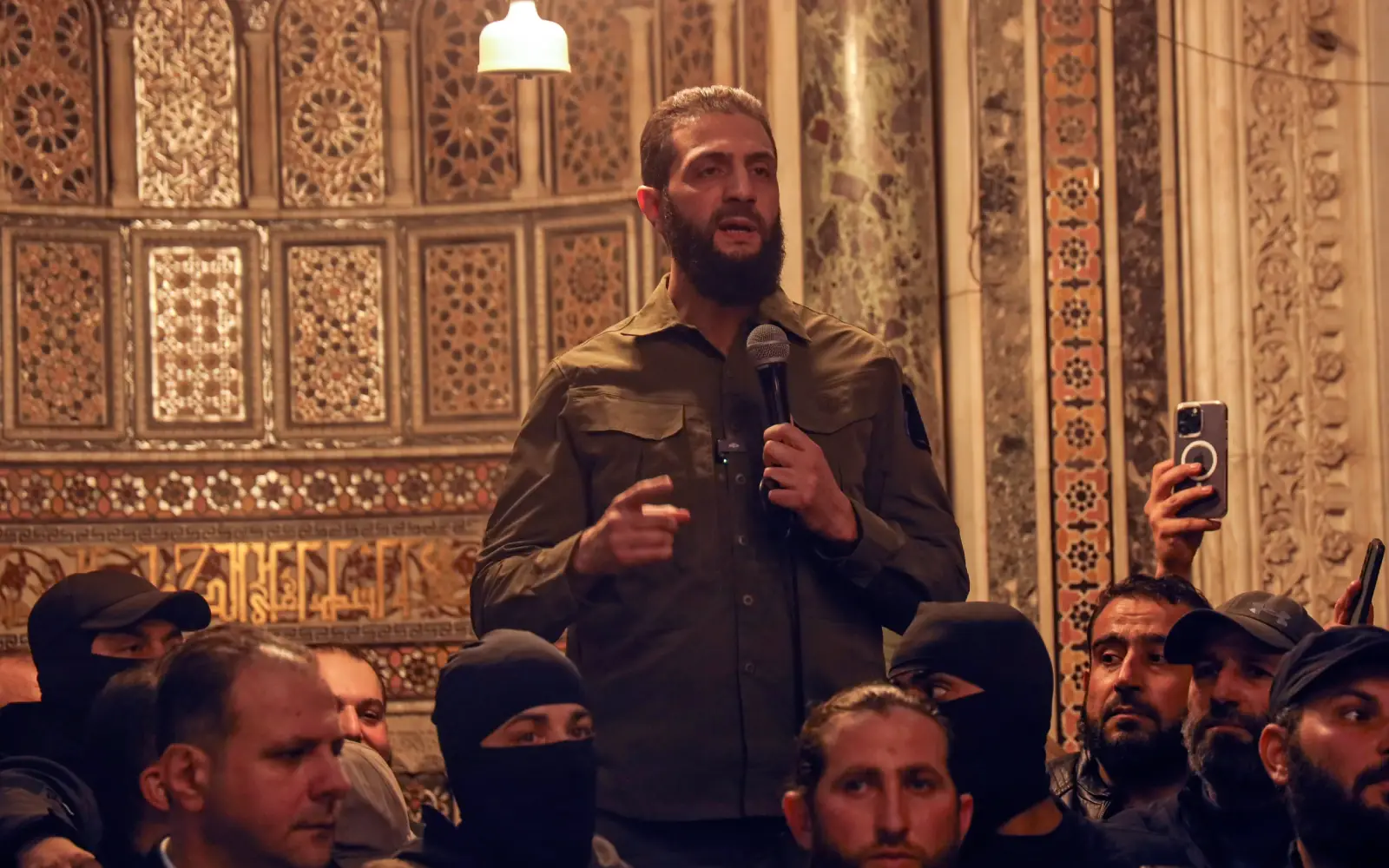Australia/Israel Review
A region transformed
Dec 17, 2024 | Ilan Evyatar

From a Lebanon ceasefire to Syrian upheaval
As northern Israel returned to a fragile calm following the November 27 ceasefire with Hezbollah and Lebanon, the reverberations of Israel’s military successes against Hezbollah and Iran unexpectedly extended to a new sphere.
In Syria, within hours of the announcement of the ceasefire, Turkish-backed rebels launched a rapid ten-day offensive that culminated in the collapse of the Assad regime – a seismic event reshaping the Middle East’s strategic landscape. This dramatic upheaval has transformed regional dynamics, presenting Israel and its neighbours with both opportunities and challenges.
The Assad regime’s sudden collapse marks a major blow to Iran’s ambitions in the region. Assad’s Syria served as a conduit for weapons and strategic support to Hezbollah. Iran also invested massively in supporting the Syrian regime. Yet, in the face of a well-coordinated rebel offensive, the regime crumbled, leaving Teheran both red-faced and weakened.
Worryingly, Israeli intelligence was once again caught off-balance. All eyes had been on Lebanon after the ceasefire with Hezbollah went into effect, hopefully bringing to a close the war that began on Oct. 8, 2023, when Hezbollah began firing missiles into Israel on a daily basis in support of Hamas’ invasion the day before. This had forced the mass evacuation of large areas of northern Israel for more than a year.
After the ceasefire, the focus in Israel was on questions such as whether Hezbollah would adhere to the terms of the deal, as it has not done in the past; how Israel should respond if Hezbollah begins testing the limits; and whether Israel should have continued the fight to further push back and weaken the Iran-backed group, rather than agree to the deal. No one foresaw that the focus of events would rapidly switch to Syria, or that the Assad regime could be in danger from Islamist rebels long believed to be contained in a small region of northwest Syria.
Nonetheless, following the unexpected and chaotic developments in Syria, Israel moved swiftly to secure its interests. Israeli forces launched some 350 airstrikes during a 48-hour campaign, reportedly destroying Syrian army fighter jets, naval ships, weapons stockpiles and air defences to prevent them from falling into the hands of the rebels, led by the militant Islamist faction Hayat Tahrir a-Sham (HTS, “Organisation for the Liberation of the Levant”). The IDF was also said to have hit “research centres” where chemical weapons were being developed. Concurrently, Israel moved forces into former Syrian army border posts in the Golan, establishing a strategic buffer zone to prevent any possibility of spillover of the Syrian conflict into Israeli territory.
The collapse of Assad’s regime has left Hezbollah even more isolated after the group had already sustained devastating blows in Israel’s two-month offensive – launched after almost a year of cross-border fire. Thousands of its fighters are reportedly dead and more wounded; its leader Hassan Nasrallah and the top echelons of the organisation have been eliminated; and Israeli troops now control parts of southern Lebanon (though the ceasefire deal requires them to withdraw by late January).
Now, without its supply lines through Syria, Hezbollah is further weakened and could face challenges from other Lebanese factions that, for years, were cowed and overshadowed by Hezbollah’s overwhelming firepower, largely supplied by Iran (though recent intelligence suggests most Hezbollah arms are Russian, and may have been supplied via the Syrian regime).
Days before Bashar al-Assad fled to Moscow, bringing an end to a dynasty that his father Hafez began over 50 years earlier, Iran had been saying it would consider sending troops to prop up the regime. On Dec. 2, the Teheran Times published a photo of Assad and Iranian Foreign Minister Abbas Aragachi on its front page, declaring Iran’s “ironclad backing” for the Assad regime and proclaiming its “strategic resolve” to defend the “Axis of Resistance”. Less than a week later, Assad was gone, and Teheran was left looking feckless.
For Israel, the disintegration of the Iranian axis presents clear strategic advantages. With Hezbollah severely weakened, Hamas almost completely dismantled and the Assad regime removed, Iran’s “Ring of Fire” has been all but extinguished. Similarly, the so-called “Shi’ite Crescent” stretching from Teheran to the Mediterranean has been bisected. However, the vacuum left by Assad’s fall also presents serious risks, including the emergence of new and unpredictable threats, in particular Islamic radicalism.
Abu Mohammed al-Jolani, the leader of the Syrian rebels, has attempted to distance himself from his jihadist past, dropping his nom de guerre – which, perhaps worryingly from Israel’s perspective, means “from the Golan” – and is now using his real name, Ahmed a-Shaara.

Ahmed a-Shaara, AKA Abu Mohammed al-Jolani: Is he still a jihadist or has he moderated? (Image: Creative Commons)
Historically, Jolani travelled from Syria to Iraq to fight the US and joined al-Qaeda, was captured by the US military and spent time in Abu Ghraib prison before returning to Syria and founding the al-Qaeda-affiliated Nusra Front. He later split with al-Qaeda, rebranding his group as Jabhat Fateah a-Sham and then as HTS. Despite his rebranding efforts, Israeli officials and analysts mostly view him as a “wolf in sheep’s clothing” – a dedicated jihadist prepared to appear moderate as a temporary tactic to consolidate power. HTS remains sanctioned as a terrorist organisation by several countries, including the US and UK, yet reports in early December worryingly suggest both countries are considering reassessing this status.
Turkey’s role in the Syrian conflict has added another layer of complexity to the regional landscape. Turkish President Recep Tayyip Erdogan’s ambitions, which include positioning Turkey as a dominant regional power, have raised alarms in Israel and among other Middle Eastern states such as Jordan, Egypt and the UAE.
Erdogan’s long-standing hostility toward Israel presents another threat. On July 28, the Turkish President, long known for his rhetorical flushes, and especially those aimed at Israel, threatened that the NATO member state could intervene militarily against the Jewish state on behalf of the Palestinians: “We must be very strong so that Israel can’t do these things to Palestine. Just as we entered Karabakh, just as we entered Libya, we might do the same to them. There is nothing we cannot do,” Erdogan said at the time.
Within Israel, there are now growing calls to capitalise on Iran’s weakened position following the collapse in Syria. Some defence analysts have urged the Government to deliver a decisive blow to Iran’s nuclear program while its regional network is in disarray and air defences all but non-existent following Israel’s counter-strike on them on Oct. 26. However, any such move would require careful coordination with international partners, especially the United States.
The ceasefire with Lebanon and the collapse of Assad’s regime mark a turning point for the Middle East. While these developments weaken Iran and its allies – and will be welcomed by the conservative Arab states that fear the destabilisation fomented by Iran and its “Axis of Resistance” – they also create a uniquely volatile environment. The success of Sunni jihadists in Syria could threaten other Arab governments, including Jordan, as well as risk new conflict across the previously relatively quiet Israel-Syrian border.
Israel’s swift actions in the Golan and its strikes on previous Syrian regime positions and weapons reflect its commitment to safeguarding its security in the face of this uncertainty, but the challenges ahead are significant.
The coming months will test yet again Israel’s ability to navigate a complex and shifting regional landscape. With new threats emerging and old alliances crumbling, the Middle East could stand on the brink of profound transformation. It is unclear if the second Trump Administration in the US will engage or seek to retreat from the region in the face of this uncertainty. For Israel, the stakes could not be higher. Its actions now have the potential to shape not only its own security but also the future balance of power for the region as a whole.






